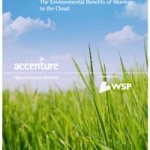Cambridge, United Kingdom – Mount Kenya, the second-highest peak in Africa has been renowned for its wide tableau of animal and plant life, from the bamboo zone with its dense stands of bamboo to the upland forest, laden with orchids, ferns, wildflowers and trees.
But according to a new United Nations Environment Programme (UNEP) database, animal and plant species living on the 5,199 meter peak are globally threatened.

In collaboration with leading conservation organizations, the UNEP World Conservation Monitoring Centre (UNEP-WCMC) has devised Integrated Biodiversity Assessment Tool (IBAT) for governments, development banks and private sector organizations to access accurate and reliable information on biodiversity and critical natural habitats on a worldwide scale – to answer the seemingly simple question, “Where on earth is biodiversity?”
Jon Hutton, Director of UNEP-WCMC, said, “In the International Year of Biodiversity, IBAT proves a major stepping stone towards pushing conservation issues higher up the development agenda.”
“Information generated by the tool can be factored into risk assessment reports and national or regional development strategies. It can also assist industries in implementing environmental safeguard policies and industry best practice standards,” he added.
Presently, there is an overwhelming amount of information scattered across countless websites, publications and the broader scientific community, but no single, reliable, trusted place to retrieve this information.
However, in the case of IBAT, a family of web-enabled systems synthesize and interpret the most significant biodiversity information available for key decision-makers in the project planning stages when alternatives and changes are most economically viable.
Besides UNEP-WCMC, the IBAT Alliance comprises three other globally-respected international conservation organizations – BirdLife International, Conservation International (CI), International Union for Conservation of Nature (IUCN) – working on a shared programme of work in partnership with leading institutions from the public and private sectors. These four organizations also represent some of the most established networks of national and regional environmental experts and organizations on the planet.
The IBAT Alliance represents an unprecedented step towards conservation data sharing and integration, enabling the private and public sectors to incorporate critical biodiversity information at key decision points in the planning and operation of development projects.
To achieve the broader vision of IBAT, the conservation partners are seeking to expand their collaboration to include additional partners from the private, public and community development sectors, particularly those organizations involved in implementing environmental safeguards and screening such as the multilateral development banks.
Notes:
Integrated Biodiversity Assessment Tool (IBAT) Alliance
The IBAT Alliance and programme of work represents an ambitious vision for improved collection, update and management of biodiversity data with the aim that decisions affecting critical natural habitats are informed by the best scientific information and in turn decision makers support the generation and maintenance of that scientific information.
To realize this vision, the IBAT Alliance is committed to an evolving collaboration between international conservation organizations and stakeholders in the private and public sectors such as businesses, multilateral development banks, government agencies, philanthropic foundations and other global, regional and national institutions.
The vision is currently being realized by an initial alliance of globally-respected conservation organizations – BirdLife International, Conservation International (CI), International Union for Conservation of Nature (IUCN) and the United Nations Environment Programme World Conservation Monitoring Centre (UNEP-WCMC) – drawing on an extensive national network of organizations and experts.
UNEP World Conservation Monitoring Centre (UNEP-WCMC)
UNEP-WCMC is collaboration between the United Nations Environment Programme, the world’s foremost intergovernmental environmental organization, and WCMC 2000, a UK-based charity. The UNEP-WCMC is an internationally recognized Centre of Excellence for the synthesis, analysis and dissemination of global biodiversity knowledge, providing authoritative, strategic and timely information for conventions, countries/territories, organizations and companies to use in the development and implementation of their policies and decisions.
BirdLife International (BirdLife)
BirdLife is a global partnership of non-governmental organizations (NGOs) with a special focus on conservation and birds. Each NGO Partner represents a unique geographic territory, and BirdLife Partners operate in over one hundred countries and territories worldwide. The BirdLife Global Partnership has more than 4,000 staff working on conservation, over 2.5 million members worldwide and 10 million worldwide supporters. The BirdLife Global Partnership strives to conserve birds, their habitats and global biodiversity, working with people towards sustainability in the use of natural resources.
Conservation International (CI)
Conservation International is a non-profit public benefit corporation organized under the laws of the State of California. Building upon a strong foundation of science, partnership and field demonstration, CI empowers societies to responsibly and sustainably care for nature for the well-being of humanity in over 40 countries.
International Union for Conservation of Nature (IUCN)
The world’s oldest and largest global environmental network, IUCN is a democratic membership union with more than 1,000 government and NGO member organizations, and almost 11,000 volunteer scientists in more than 160 countries. IUCN helps the world find pragmatic solutions to our most pressing environment and development challenges. It supports scientific research, manages field projects all over the world and brings governments, non-government organizations, United Nations agencies, companies and local communities together to develop and implement policy, laws and best practice.
Source UNEP Press Release dated August 3, 2010.














